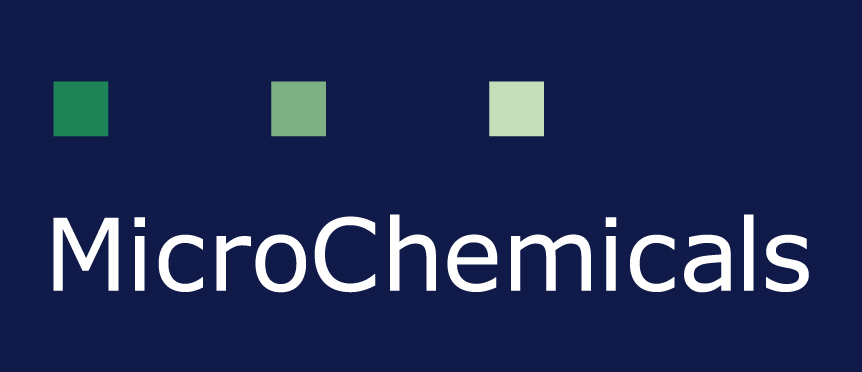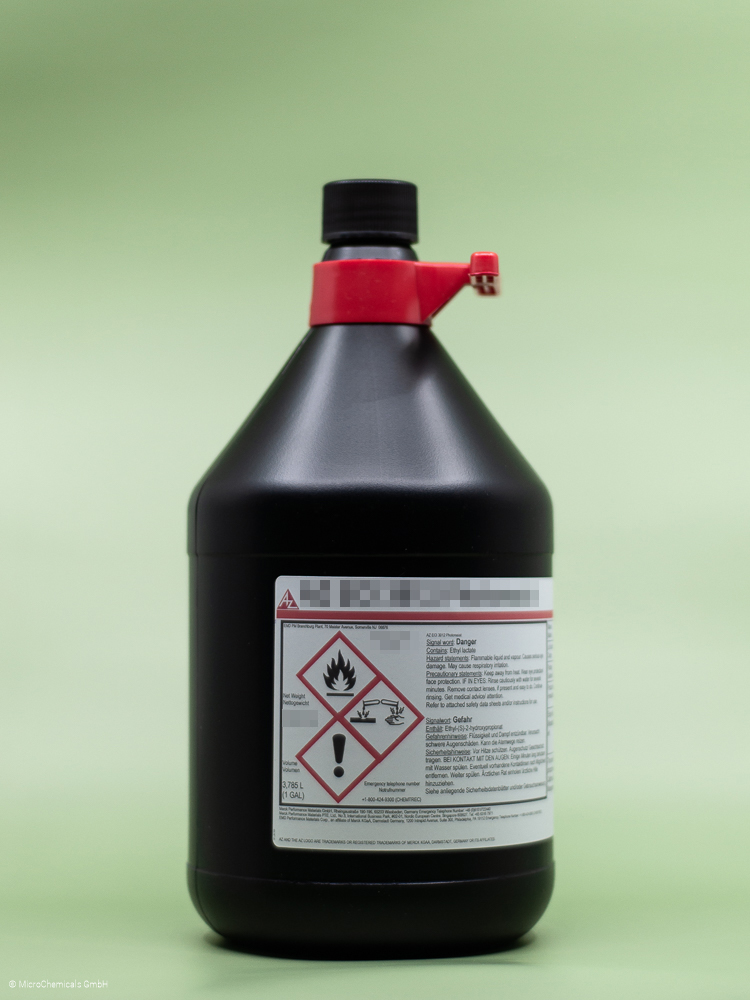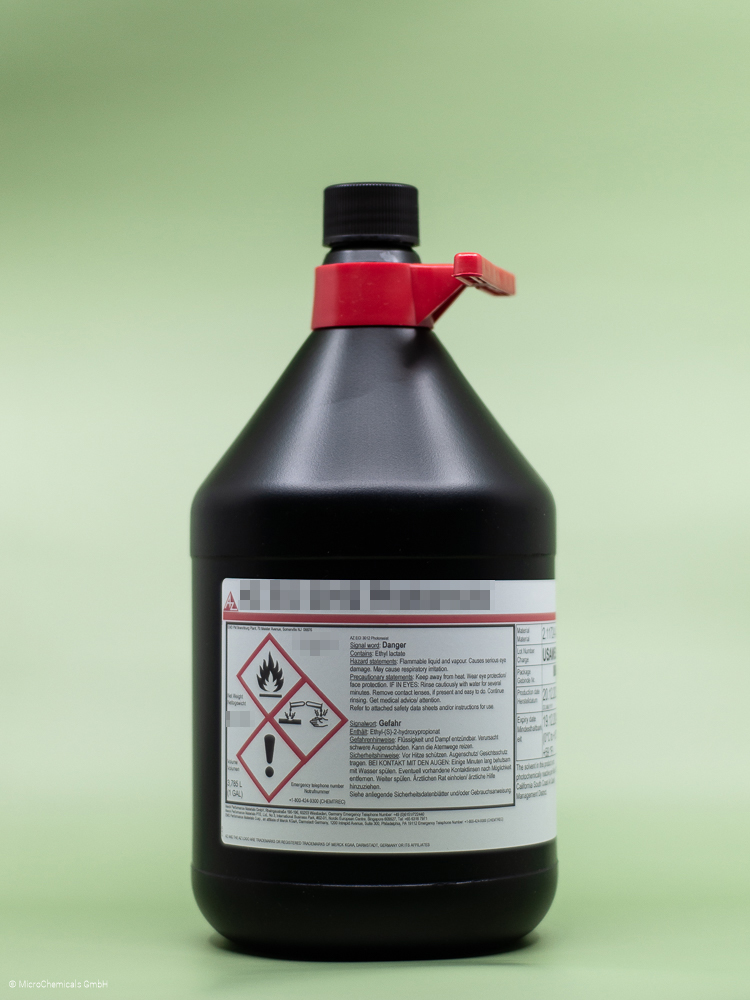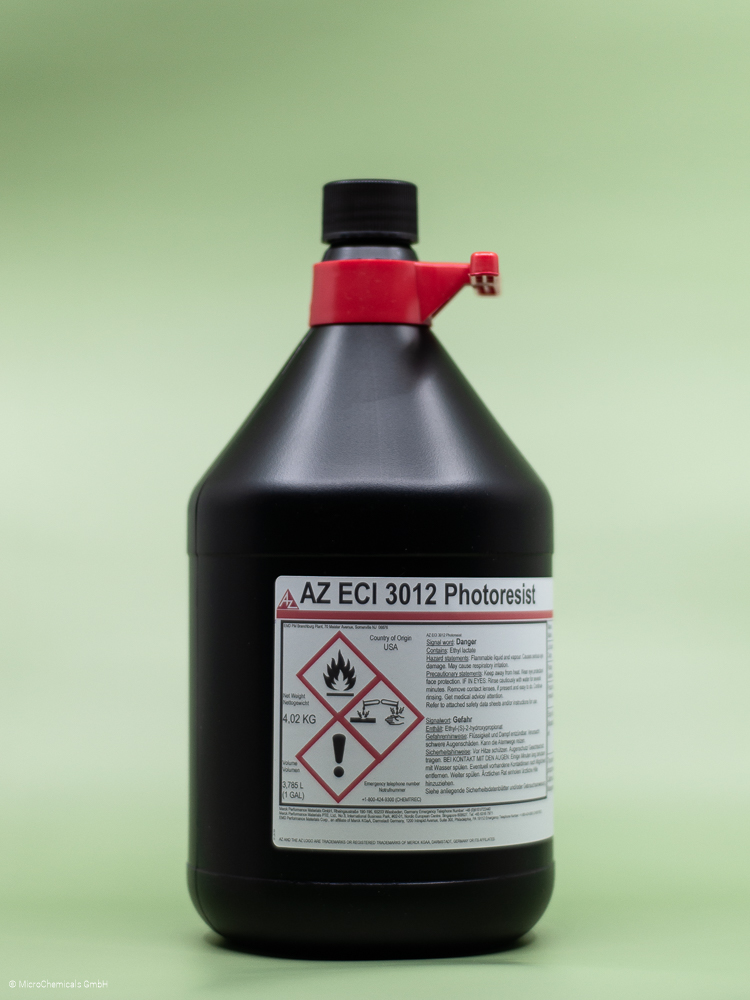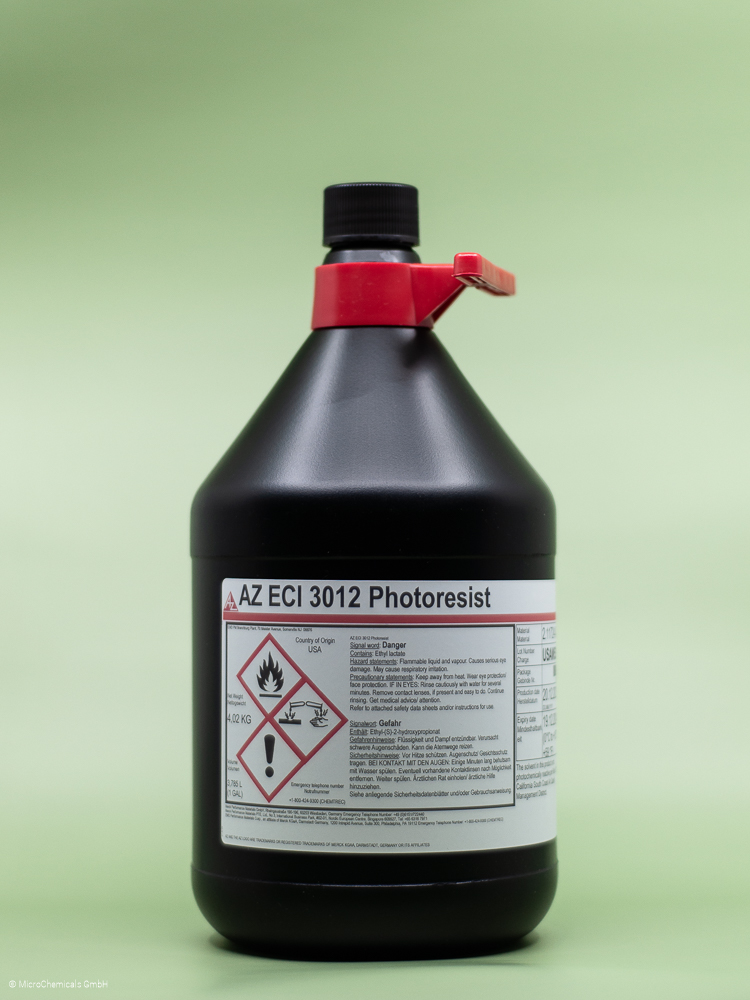AZ IPS-6090 Photoresist - 3.785 l
Description
Product information "AZ IPS-6090 Photoresist - 3.785 l"
AZ® IPS-6090
Positive Thick Resist
General Information
AZ® IPS-6090 is a chemically amplified, i-line sensitive ultra-thick photoresist for high aspect ratios.
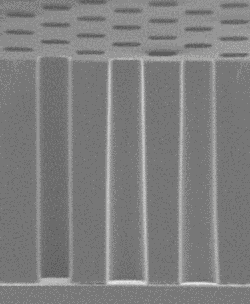
AZ® IPS 6050 (80 µm resist film thickness)
Product Properties
AZ® IPS-6090 covers a resist film thickness range of approx. 15 - 50 µm. As a chemically amplified resist, the AZ® IPS-6090 does not require rehydration between softbake and exposure, requires significantly lower exposure doses compared to non-chemically amplified resists of comparable thickness, does not release nitrogen during exposure (no bubble formation in the resist film during exposure), and has very high development rates for a thick resist. These properties help to make the entire process significantly faster and less prone to problems than with non-chemically amplified thick resists. Its good adhesion to all common substrate materials and its potential for steep resist sidewalls make it particularly suitable for galvanic molding. In principle, the AZ® IPS-6090 is only sensitive to i-line, but with correspondingly high exposure doses and resist film thicknesses, the h-line (405 nm) can also be used. It should be noted that with these chemically amplified photoresists, the post exposure bake is not only optional, but absolutely necessary in order to complete the photoreaction induced during exposure and to enable subsequent development. If thinner photoresist layers than approx. 15 µm are desired, the AZ® IPS 6090 can easily be diluted with PGMEA = AZ® EBR Solvent.
Developers
TMAH-based developers such as the ready-to-use AZ® 326 MIF or AZ® 726 MIF are recommended for developing this chemically amplified photoresist. KOH- or NaOH-based developers such as the AZ® 400K.or AZ® 351B are less suitable for the AZ® 40 XT.
Removers
If the resist structures have not been thermally cross-linked by plasma processes, ion implantation or high temperatures (> approx. 140 °C), all common removers such as AZ® 100 Remover, DMSO or many other organic solvents (e.g. acetone rinsed with isopropanol) are suitable for removing the resist layer. For cross-linked resist structures, high-performance strippers such as the NMP-free TechniStrip P1316 or AZ® 920 Remover are recommended, and in the case of alkaline-sensitive substrate materials (such as aluminum), the TechniStrip MLO 07.
Thinning/ Edge Bead Removal
If the resist is to be diluted for spin coating, PGMEA = AZ® EBR Solvent is an option. PGMEA is the solvent for AZ® IPS-6090 anyway and is also recommended for edge ridge removal if necessary.
Further Information
Our safety data sheets and some of our technical data sheets are password-protected.
You will receive the access data after completing the form.
The access data for the data sheets are not your login data from our shop!
MSDS:
Safety Data Sheet AZ® IPS-6090 Photoresist english
Safety Data Sheet AZ® IPS-6090 Photoresist german
TDS:
Technical Data Sheet AZ® IPS-6090 english
Information AZ® IPS-6090 english
Application Notes:
Further Information about Photoresist Processing
Related products
Developer
Remover
